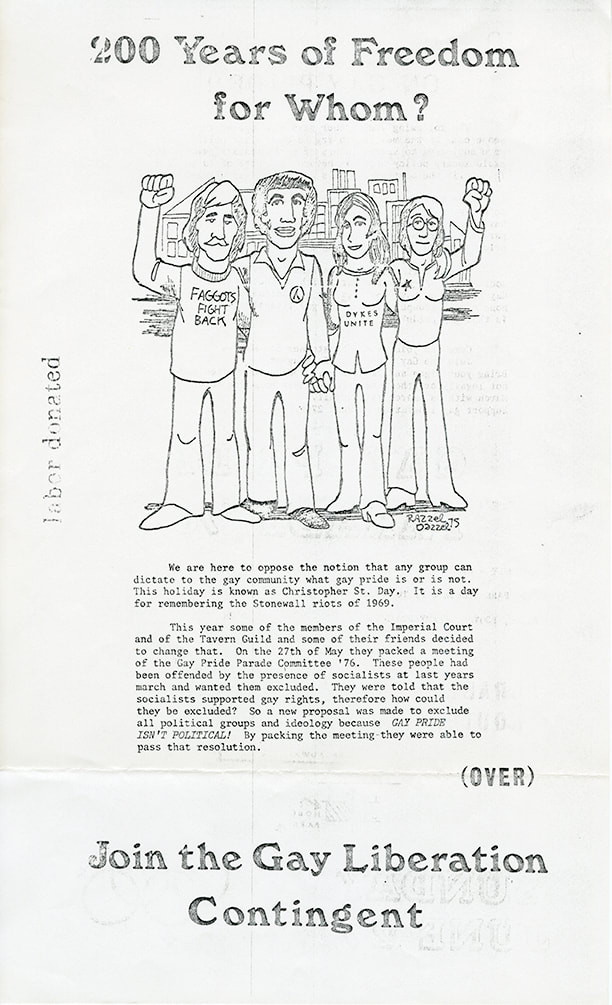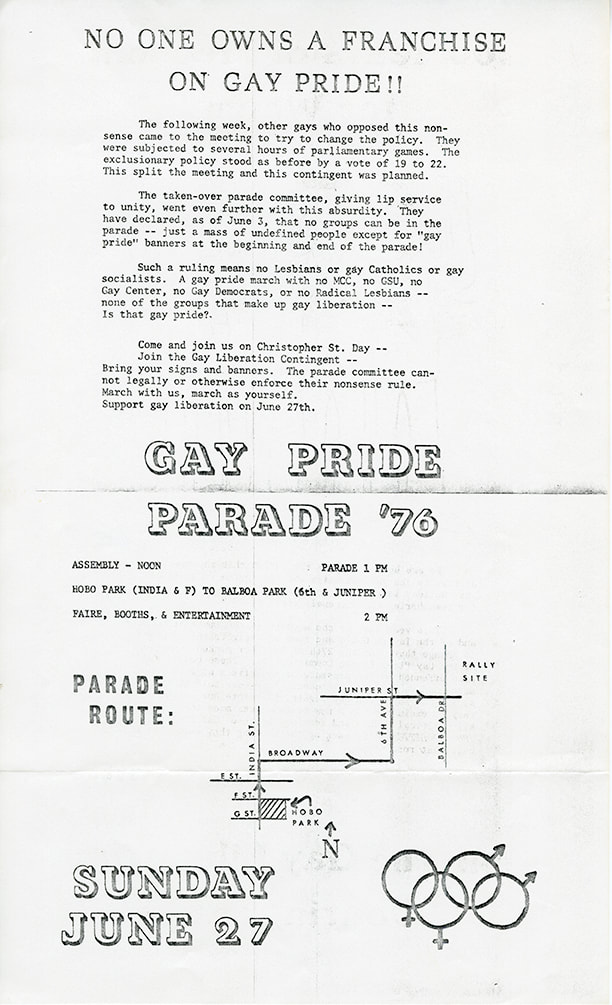|
By: Amaya McCutcheon, USD '26 (Spring 2025 Intern).
When we think about AIDS activism in the 1980s and 1990s, many of us imagine the big national groups. However, some of the most influential and effective work was accomplished by the smaller local groups that organized with people who were often disenfranchised. One example is POCASE, People of Color AIDS Survival Effort, which was based in San Diego.
0 Comments
By: August (he/they).
In current media, there’s a concern around being “woke” and having characters that not only represent a marginalized group, but represent them well. Otherwise, they end up falling into the token category and are waved off as being relatable for the sake of brownie points. The token black guy to fill out an otherwise all white cast. The token woman in a group of men that can’t overcome her libido and inevitably falls in love with one of them. The token queer character that also happens to aggressively and harmfully use AAVE, even though they themselves are cis white men. It’s a little strange, but this popular character archetype is a good way to describe myself. Archives Assistant (temporary/part-time)
Lambda Archives of San Diego (LASD) is a 501(c)(3) non-profit organization that holds a wealth of historical and contemporary materials documenting the LGBTQ+ community in the San Diego, Northern Baja California, and Imperial County region. We are seeking a temporary ARCHIVES ASSISTANT (part-time) to begin work immediately on a project from January to June 2022. Applications will be reviewed as they are submitted, so it is recommended that you apply ASAP. If we would like to set up an interview with you, we will contact you via email. By: Joyce Gabiola, Head Archivist
A few days ago, I thought about how my relationship with Pride has differed since coming out as gay in college. At that time, Pride meant that I could be closer to my full self in public (but still unknown to my parents). It meant that I would attend the Pride festival and freely be in a crowd of people who I felt were just like me. It meant that I would march in the Pride parade as a member of a community organization or cheer from the sidewalk with my friends. As this was all in the southern part of Texas in the month of June, it also meant that I was always drenched with sweat. It also meant that, year after year, I would feel more empowered to come out to more people, including my parents, eventually. It meant that in June being gay/queer would temporarily seem mainstream rather than ‘other’. Decades later, this feeling has become the norm for me. As far as my queerness, I don’t feel so much as ‘other’ anymore. And I acknowledge that this feeling is a privilege. 200 Years of Freedom for Whom?: Red Scare and the Depoliticization of San Diego Gay Pride 19765/17/2021 By: Gabrielle Garcia, Project Assistant While scanning objects from an unnamed flat file drawer of miscellaneous materials from San Diego Pride events, Diversionary Theatre, and a private artist, I came across a small double-sided flyer from 1976 that immediately caught my eye. The words “200 Years of Freedom for Whom?” across the top of the first page are bold and unrelenting. As of 1976, the United States celebrated its 200th anniversary of existence, a country built and maintained by the systemic exploitation and disenfranchisement of Black, Indigenous, and other people of color, women, LGBTQ folks, disabled people, immigrants, and poor and working class people. 1976 was also the year of the second permitted San Diego Pride Parade, entitled “Gay Spirit”, six years after the events at the Stonewall Inn in New York.1 LGBTQ pride marches and events across the United States were born out of the Stonewall Uprising, led by Black and brown queer and trans folks in response to homophobic, transphobic, racist, and classist police violence in 1969. It is necessary to say that LGBTQ pride owes its very existence to the most marginalized community members who frequented the Stonewall Inn, including butch lesbians, trans folks, houseless folks, sex workers, drag queens, people of color, and those at the overlaps of these identities. By: Gabrielle Garcia, Project Assistant
There’s something particularly chilling about handling memorial objects for local loved ones who had passed from HIV/AIDS while living through a devastating pandemic where the same government negligence continues to exacerbate human loss.
By: Gabrielle Garcia, Project Assistant
After watching the “Native American Intellectual Property Issues” webinar, the fourth in a five-part series regarding the Protocols of Native American Materials, several themes from the discussion between the speakers from the Passamaquoddy People Project stood out to me:
by Gabrielle Garcia, Project Assistant
[ Trigger warning for discussions of antisemitism, racism, ableism, and Nazism ] |
Archives
May 2025
Categories
All
|





 RSS Feed
RSS Feed